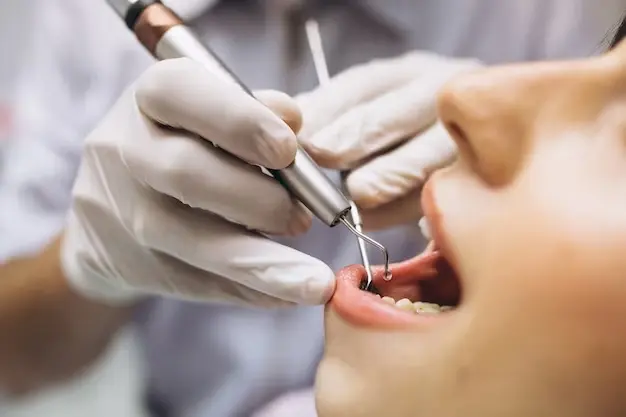Introduction to Dental Implants
The world of dental care has undergone a monumental shift thanks to the integration of advanced technology into routine procedures. Dental implants, which are engineered to replace tooth roots and support artificial teeth, represent a significant leap forward in oral health solutions. These are not just cosmetic enhancements; they restore vital functions, allowing individuals to eat, speak, and smile with confidence. The innovation of procedures like all-on-4 dental implants exemplifies how cutting-edge techniques can bridge the gap between necessity and convenience, offering patients fast, effective, and restorative options.
Technological Advancements in Dental Implants
Imagine a world where a digital scan of your mouth can be used to craft a perfect replacement tooth, tailored precisely for you. This is the reality with modern dental implants thanks to 3D printing and computer-aided design (CAD). As these technologies evolve, they allow for an unprecedented level of customization, providing prosthetics that fit seamlessly within the unique architectural structure of your mouth. This precision drastically reduces the risk of complications and enhances the integrity and longevity of the implants. Not only does this technology allow for stunning accuracy, but it also considerably speeds up the creation process, leading to quicker turnarounds and less downtime for patients, making advanced dental care more accessible to a broader audience.
The Benefits and Challenges of New Implant Technologies
- Benefits: The benefits of these advancements are multifaceted. Beyond the aesthetic improvements, patients experience a marked increase in functional capability and oral health quality. Precision-engineered implants ensure a more secure fit, significantly reducing the risk of discomfort and obstacles to chewing and speaking. The durability provided by advanced materials ensures that these implants often last a lifetime with proper care.
- Challenges: Despite these advantages, the path to integrating new technologies isn’t without hurdles. The cost associated with cutting-edge tools and personalized manufacturing can be significant and often passed down to patients. Additionally, the learning curve required to master these new technologies can slow their adoption. For practitioners to correctly use these tools, they must dedicate themselves to continual education and training, which might add to service costs initially but promises better patient care in the long run.
Impact of Digital Dentistry on Patient Care
Digital dentistry represents a significant advancement over traditional dental practices by incorporating a range of computer technologies that enhance both diagnostic accuracy and treatment efficacy. This modern approach not only streamlines procedures but also fosters a more patient-centered experience. Among the key innovations are digital X-rays, which provide immediate imaging results with less radiation exposure, and virtual treatment planning, which allows for precise simulations of the proposed dental outcomes before any physical work begins. Orthodontists are leveraging these sophisticated technologies to transform their interactions with patients, ensuring that each step of the treatment process is transparent and comprehensible. According to Dentistry IQ, the adoption of digital workflows is crucial for minimizing procedural times and significantly reducing the potential for human error. This efficiency contributes to a more relaxed and satisfying experience for patients, as they often spend less time in the chair and receive more accurate diagnostics.
Furthermore, this integrated approach to dental care guarantees that treatment programs are both individualized and flexible enough to accommodate each patient’s particular needs. By focusing on tailored solutions, practitioners can achieve better health outcomes, improving patients’ overall well-being. This change in dental procedures emphasizes how vital technology is to improving patient happiness and care in contemporary orthodontics. Digital dentistry transcends traditional practices by leveraging computer technologies to make diagnosis and treatment more effective and patient-friendly. These technologies’ smooth implementation and integration, from digital X-rays to virtual treatment planning, are transforming the way orthodontists interact with their patients and enhancing the accuracy of diagnostics. According to insights shared by Dentistry IQ, the implementation of digital workflows is pivotal in decreasing procedural times and reducing human error, thereby elevating patient satisfaction. This harmonized approach to treatment ensures that patients receive care tailored meticulously to their individual needs, leading to better health outcomes overall.
Artificial Intelligence’s (AI) Contribution to Dental Treatment Optimization
Artificial Intelligence (AI) is a burgeoning force in the field of dentistry, offering capabilities that were once the domain of science fiction. AI might completely transform diagnoses by enhancing the predictive accuracy of treatment outcomes and enabling the early detection of dental issues. Using machine learning algorithms facilitates the processing of complex digital images of the oral cavity to detect anomalies that the human eye might miss. As reported by Medical News Today, AI applications are progressively underpinning dentists’ capabilities, allowing for a more detailed analysis that powers data-driven decisions and leads to more successful implant outcomes.
Potential Risks and Considerations in Using Advanced Technology
The incorporation of advanced technologies into dental practices isn’t without its considerations. There is a pressing need for robust data privacy frameworks to ensure patient information remains secure as digital records become more ubiquitous. Ethical practices must be developed to safeguard sensitive data from potential breaches, ensuring patient trust isn’t compromised. Practitioners must remain vigilant and informed, striking a balance between innovation and ethical standards to maintain patient privacy while delivering cutting-edge care.
The Future of Dental Implants and Patient Satisfaction
As dental implant technology develops further, it is not only the procedures that are improving; patient experiences are being revolutionized. The ultimate goal is to provide dental restorations that feel, function, and appear as naturally as possible. Patients stand to benefit significantly as these technologies become more mainstream and the balance between cost and accessibility improves. The focus isn’t merely on replacing missing teeth but on improving patients’ general quality of life. By continuously refining these technologies, dental professionals can contribute secondary but profoundly positive impacts on patients’ mental and emotional well-being by instilling confidence and restoring self-esteem.
Conclusion: Embracing Changes for Better Oral Health
The future of dental implants is as exciting as it is promising. With each new technological advancement, there is a step forward toward more practical, reliable, and accessible oral healthcare. As the industry moves towards broader adoption of these cutting-edge technologies, the potential for improving patient outcomes grows exponentially. It is through embracing these changes that both dental professionals and patients alike will discover new horizons in dental health, ensuring a bright future of not only restored smiles but also enriched lives.
Also Read-Comprehensive Foot Care: Tips for Healthy and Pain-Free Feet

